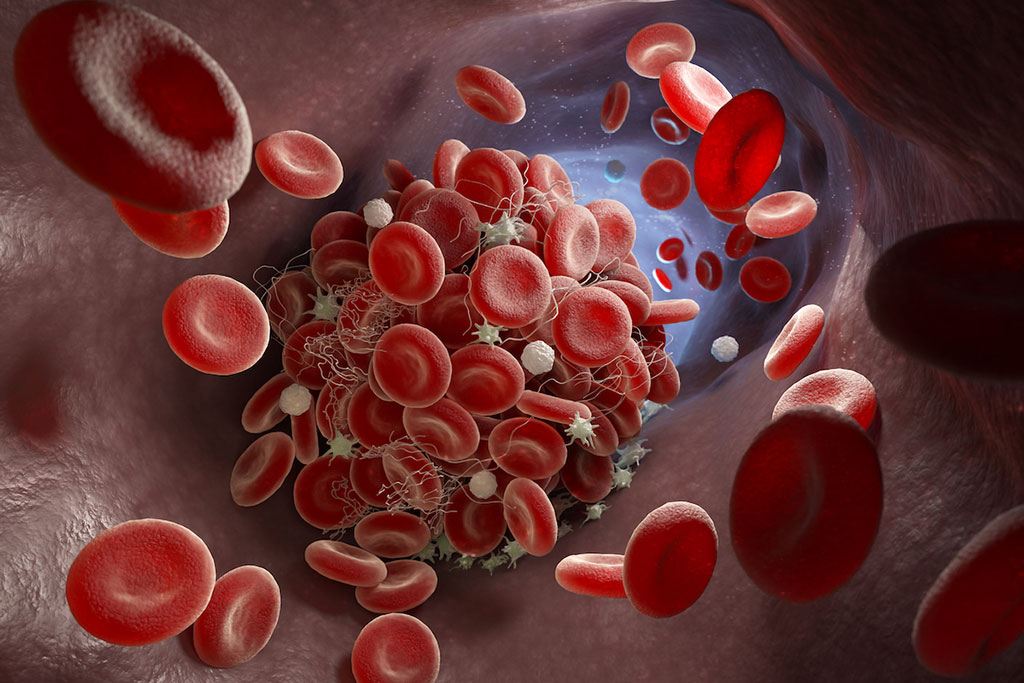New Tool Analyzes Blood Platelets Faster, Easily and Accurately
Posted on 12 Dec 2023
Platelets, the small, colorless fragments in our blood, play a critical role in stopping bleeding by clumping at sites of blood vessel injuries. However, platelets can sometimes underperform, leading to insufficient clotting and uncontrolled bleeding, or overperform, resulting in dangerous blood clots that can cause heart attacks or strokes. This issue becomes even more pronounced during cardiac surgery. Currently, platelet function is assessed using aggregometry, which evaluates how quickly and to what extent platelets in a blood sample clump together. Now, researchers have developed a new method for testing platelet function in blood samples that is quicker, simpler, and more precise than existing methods.
This innovative technique, developed by researchers at Emory University (Atlanta, GA, USA), marks a significant advancement in the field, offering the first in-depth view of the molecular forces exerted by activated platelets in patient blood samples. The findings suggest that this technology could be instrumental in evaluating the impact of antiplatelet medications on individuals and better understanding bleeding risks for patients undergoing cardiopulmonary bypass surgery. Remarkably, this method only requires a small blood sample, about the size of a drop, compared to the tablespoon-sized samples needed for current tests. Its heightened sensitivity could be particularly useful for diagnosing infants with rare, inherited platelet disorders.

The method utilizes synthetic-DNA tension probes, a concept the research team developed over a decade ago, capable of detecting cellular forces as small as a few piconewtons – significantly less than the weight of a paper clip. The researchers amplified the probes' signal using an enzyme known as CRISPR-associated 12a. They developed the Mechano-Cas12a Assisted Tension Sensor (MCATS), a highly precise and sensitive device that can measure cellular traction forces generated by as few as 2,000 platelets in a sample. The robust signal generated is detectable with a standard fluorometer, a common tool in blood tests, and MCATS is compatible with a plate reader for handling multiple samples simultaneously, essential for research.
The team tested MCATS's effectiveness by analyzing blood samples from healthy volunteers and patients pre- and post-cardiopulmonary bypass surgery. Their findings confirmed that MCATS was responsive to platelet mechanical forces and could accurately measure the impact of various antiplatelet drugs, from aspirin to prescription medications. MCATS readings correlated with the likelihood of patients needing platelet transfusions to control bleeding post-surgery. The researchers are now conducting a prospective study to further assess MCATS as a diagnostic tool, testing blood samples from patients with platelet disorders before and after treatment to evaluate therapy effectiveness.
“The bottom line is that MCATS is a whole new way to measure platelet function using a really tiny sample,” said Roman Sniecinski, a professor in Emory School of Medicine’s Department of Anesthesiology and a leading expert in the field of perioperative coagulation. “It’s telling us something specific that we haven’t been able to measure before and that can give us a new way to understand what’s going on with platelet dysfunction and the best methods for controlling it.”
Related Links:
Emory University









 Analyzer.jpg)




